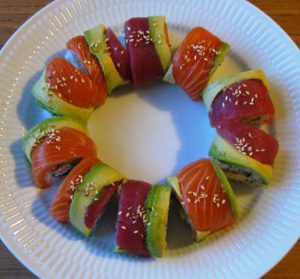
Noodle soups are not the same as ramen soup.
In Japan, there are many different types of noodle soups. Ramen soup as most people know in Europe is a soup out of several hundred noodle soups.
In Japan, noodle soups are either made on fish stock, pork stock or chicken stock. It is a stock that is flavored with other ingredients in many many different ways.
The selection of noodles is large in Japan. There are 7 different noodles that are used for certain dishes and styles within Japanese cuisine. Some noodles are used only for soups and others are used for stews.
Japanese noodle soups can be compared to Danish meatballs. Every noodle soup eatery in Japan has their very own recipe for how such soup should be made and taste. Often the recipes go from generation to generation.
If you travel around Japan, you will find that there is a big difference in noodle soup, depending on whether you are in southern Japan or in northern Japan.
Read more about Noodle soup course for beginners, where you learn to make 2 very different and tasty soups.
_
Zoë has lectured and held sushi courses for A. P. Moller – Maersk, Hugo Boss Nordic, Novo Nordisk, Novartis, Velux, Gorrissen Federspiel, Beierholm revision, Elbek & Vejrup and many more.








